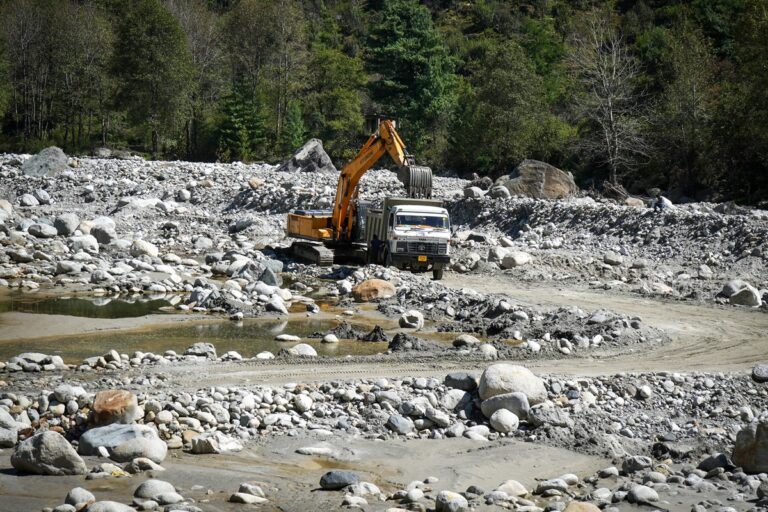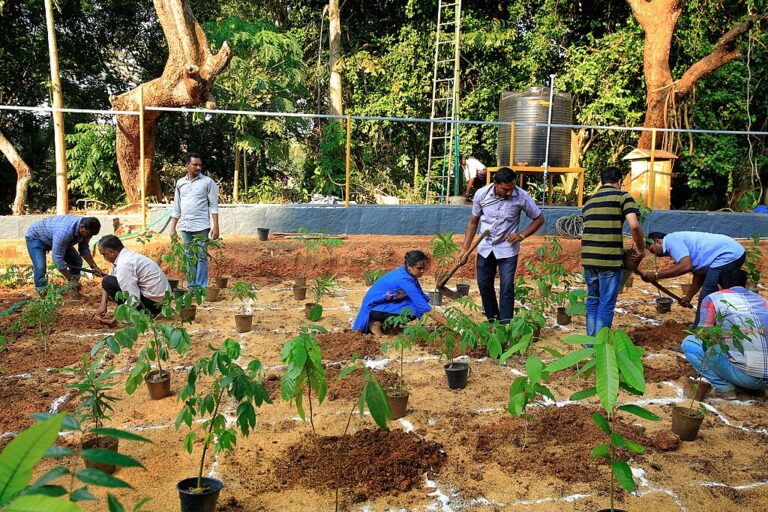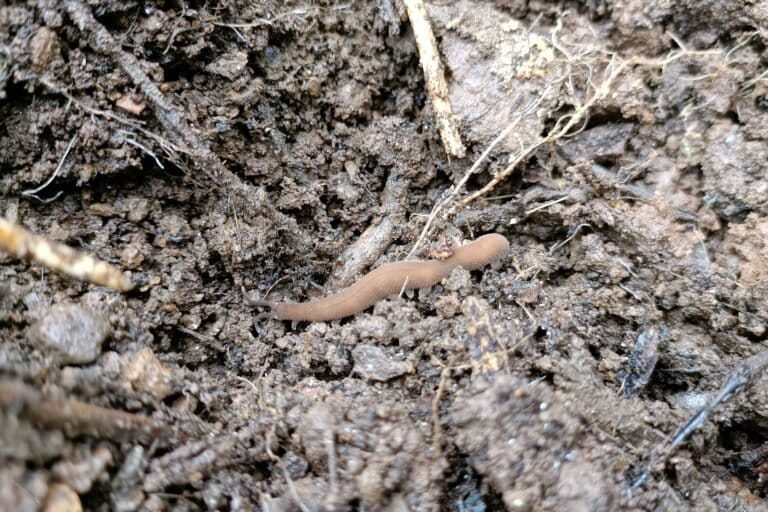- The Draft National Forest Policy 2018, which is open for public comments till April 14, has initiated discussions and debates across the country.
- If this draft becomes policy, it will replace the National Forest Policy of 1988. Both the versions give importance to increasing forest and tree cover in the country.
- Experts rue that this draft also misses the opportunity to give importance to grasslands that are home to much biological diversity and support important ecosystem services.
In 1987, Asad Rahmani, ornithologist and the former director of the Bombay Natural History Society (BNHS), wrote in the journal Oryx that the greatest threat to the great Indian bustard was the loss of grasslands in India. The bustard, likes open land with short vegetation. The sandy deserts of Rajasthan, open scrub forests of Maharashtra and semi-arid grasslands of peninsular India, Rahmani noted, were ideal habitat for this endemic bird.
A year after this study in 1988, the Ministry of Environment, Forests and Climate Change (MoEFCC) released a revised version of the National Forest Policy of 1988 (NFP-1988). The policy set a vision for covering one-third of the country in forests by planting trees in non-forest lands such as river banks, lakes, beaches and the “semi-arid, and desert tracts,” that bustards love. No part of the policy talked about protecting or restoring other ecosystems.

Grasslands were historically neglected ever since India’s first national forest policy, starting with the British administration. These treeless, timber-free landscapes have been historically considered wastelands. This label annoys Rahmani no end.
“It is our stupidity and culpability that we consider some ecosystems as waste,” he said, insisting that wastelands were created when human beings interfered with natural ecosystems.
The narrative of grasslands as wastelands
Since the 1950s, ecologists and naturalists have repeatedly pointed out that India’s wildlife does not just inhabit forests. Bustards, blackbucks, wolves and foxes live in the semi-arid grasslands and deserts of western India. Endangered herbivores such as the Nilgiri tahr are found only in the shola-grasslands unique to the Western Ghats and the Vulnerable snow leopards thrive in the dry cold deserts of the Trans-Himalayas. “Many of these species are totally dependent on grasslands,” said Rahmani.
Studies have shown that the openness of grasslands and deserts are vital for animals such as the wolves, which travel large distances tracking prey species. Openness is important for these prey species watching out for predators.
Ancient grasses and short stunted trees also provide food for several herbivores like black bucks and chinkaras and support certain dryland fruits and insects that bustards depend on for sustenance. Open sandy beaches along the coastline and in the Andaman Islands, are important nesting sites for sea turtles like the endangered Olive Ridley turtle and leatherback turtle.
Yet these ecosystems have been swathed in plantations of trees, said Sutirtha Dutta, a scientist from the Wildlife Institute of India (WII). For instance, the Shokaliya grasslands, in the Ajmer district in Rajasthan, a prime habitat for the lesser florican (Sypheotides indicus), has been overrun with prosopis, an aggressive invasive species that converts open grasslands and deserts into woodlands. This affects the animals that depend on open habitats to find food or keep vigil against predators.
“Despite all the good reasons for removing these plantations, there is inertia because this step will reduce the tree cover of Rajasthan,” Dutta said.
Similarly, the Ranebennur Blackbuck Sanctuary in Karnataka, home to a sizeable population of blackbucks, is covered with eucalyptus plantations. The local forest department admits that the exotic from Australia has destroyed grassland habitat, but in its management plan recommends planting native fruit trees in the remaining open patches.

“Here, excessive and blind reliance on tree cover as a conservation metric is harmful for managing non-forest ecosystems such as grasslands, deserts and wetlands,” Dutta asserted.
Even government-led bodies have repeatedly pointed out that natural non-forest lands were important ecosystems in their own right. In 2006, the Planning Commission of India formed a task force to assess the status of grasslands and deserts in the country. A group of scientists (including Rahmani) and officials from the Ministry of Environment and Forests examined arid and wet grasslands, and cold and hot deserts.
The report was clear. The colonial era mindset was hurting grassland and desert ecosystems in the country. The task force pointed out that over-grazing, diversion of land towards agriculture and haphazard afforestation drives in non-forest lands was destroying ecosystems that were not just home to wildlife, but also an important source of livelihood for local communities.
Meanwhile the bustard, emblematic of semi-arid grasslands has lost more ground, becoming extinct even in sanctuaries like Ranebennur in Karnataka and more recently the Great Indian Bustard Sanctuary in Maharashtra. The species was declared Critically Endangered in 2011 and in 2013. After several years of lobbying by ecologists like Rahmani, the MoEF began Project Bustard to safeguard the species and increase its numbers. It is one among the 17 species listed for the Species Recovery Programme of the MoEF.
But what of the grasslands the bustards love?
The new draft forests policy is a regressive step
In 2016, it seemed that the MoEF had finally heard these concerns. Having declared it was time to upgrade the NFP-1988, the ministry released a new draft National Forest Policy and invited public comments. The policy reiterated the national goal of having one-third of India under tree cover. But a crucial caveat was added: “Rather than an exclusive focus on forest and tree cover, targeted efforts should be made to preserve the country’s varied ecosystems including alpine meadows, grasslands, deserts, marine and coastal areas etc.”

If passed, the policy would have been the first to include ecosystems other than the forest. But the draft was criticised for several other reasons. Rather than address those criticism the Ministry shelved the entire document.
After two more years, a new version of the draft was produced this year in March.
After decades of research pointing out the need to recognize non-forest ecosystems, the first few lines of the Draft National Forest Policy 2018 (DNFP-2018) turned out to be a word to word repetition of the 1988 policy. So much so that it re-produces the exact lines about planting trees in semi-arid and arid lands. There is no mention of other ecosystems.
“It is a retrograde step,” said Rahmani, adding that the terms grasslands, wetlands, deserts, marine and coastal areas should be brought back.
“It’s as if they haven’t read the new scientific literature produced either in this country or elsewhere in the last 30 years,” said Abi Tamim Vanak, an ecologist from the Ashoka Trust for Research in Ecology and Environment (ATREE), who specialises in semi-arid grasslands. “If any biome does not, or historically did not have high tree-cover, then planting trees on it is as degrading as clear felling a primary rainforest.”
Trees hold back the desert
“This is partially true,” said Anoop K.R who is the Deputy Conservator of Forests (DCF), Desert National Park, in Jaisalmer, Rajasthan, “but we cannot think from a purely ecological viewpoint”. Thirty years ago, Anoop points out that Jaisalmer was inaccessible in the summer when sand dunes covered the roads and filled up the canals.
“The only way to stop this (sand) was plant trees to stabilise the sand dunes and around canals and roads as shelter belts,” both vital to support the substantial increase in local and tourist population of Jaisalmer. Anoop also admits that the trees that can survive in the sandy areas, especially the dunes are predominantly exotic invasive species like prosopis.

Anoop agreed that grasslands are important for local communities. He points out that his department is not solely focussed on planting tree species in the deserts. “Our focus is on silvi-pastoral,” he said. “We are raising grasslands with a few trees – up to 200 per hectare,” he explained adding that it was important to not focus on plantations.
But studies (including MoEFCC funded ones) also show that local communities depend heavily on open treeless grasslands. Dutta points out that semi-arid grasslands support up to 500 million domestic animals and the country’s dairy industry.
Need to emphasise ecosystem diversity
Vanak and Rahmani believe that deleting lines about grasslands and other ecosystems, was a calculated move on the part of MoEFCC. The draft advocates afforestation programs and commercial plantations in areas outside forests, which is another label for ecosystems like grasslands. “This is essentially a form of privatising common lands,” observed Vanak.

Rahmani and Dutta allege that CAMPA funds (Compensatory Afforestation Fund Management and Planning Authority) compounded this problem. CAMPA funds are compulsory payments collected from industries when forests are diverted towards development activities. These funds are often used to plant trees in grasslands, destroying another ecosystem according to both researchers.
“It is a double whammy!” commented Rahmani.
Vanak is clear that such issues would continue as long as there was no unified policy that recognised the diversity of ecosystem types in the country.
[Also read: Is the new forest policy draft missing the wood for the trees?]
CITATION:
Vanak, A.T., Hiremath, A., Krishnan, S., T.G., Ganesh & Rai, N. D. (2017). Filling in the (forest) blanks: the past, present and future of India’s savanna grasslands. 89-93.
Vanak, A. T., Kulkarni, A., Gode, A., & Krishnaswamy, J. (2016). Extent and Status of Semiarid Savanna Grasslands in Peninsular India. ENVIS Bulletin on Ecology and Management of Grassland Habitats in India, 17, 192-201
Dutta, S., Rahmani, A., Gautam, Kasambe, R., Narwade, S., Narayan & Jhala, Y.V. (2013). Guidelines for Preparation of State Action Plan for Resident Bustards’ Recovery Programme. Submitted to the Ministry of Environment and Forests, Government of India. New Delhi. Endangered Species Research. MoEF.
Rahmani, A.(1987). Protection for the great Indian bustard. Oryx, 21. 174 – 179, d.o.i 10.1017/S0030605300026922.













